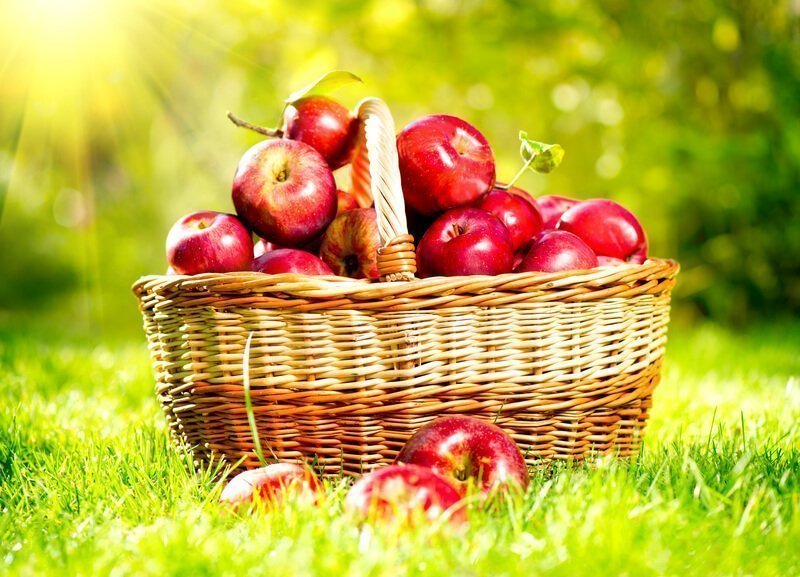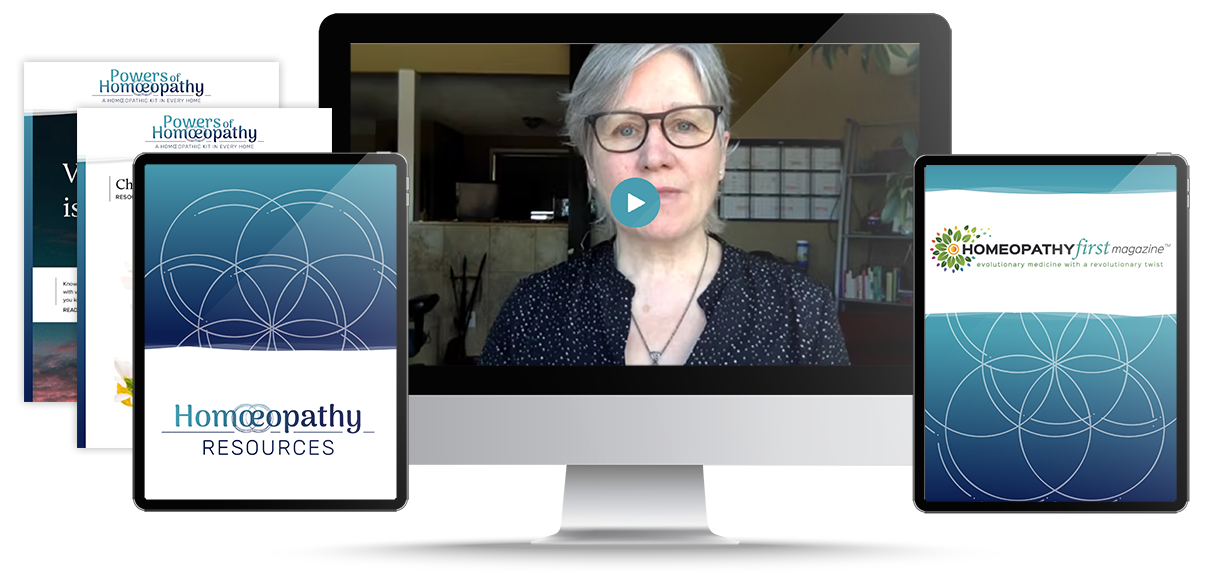Today is Part 2 of the Healing Energies of Apples by good friend and colleague, Debby Bruck. ‘See’ you next week when I am back at my desk. Thank you Debby for some great learning. We will think very differently about apples from now on!
The Healing Energies of Apples: Part Two
Apples come in all shades of reds, greens and yellows and were the favorite fruits of the ancient Greeks and Romans. We all have favorite foods and believe it or not, some people even have an aversion to fruits. Desires, cravings, likes, aggravations and aversions to foods and drinks can be useful bits of information to confirm selecting a “Similimum” — symptom matching homeopathic remedy — for an individual. Oddly, the repertory (book of rubrics) lists only one remedy, Carcinosin, as having ‘itching’ as an aggravation in response to eating apples; while eight remedies appear listed for person’s having an aversion to eating apples: Antimonium tartaricum, Guajacumofficinale, Helleborusniger, Lac lupinum, Lyssin, Pyrus-communis, Tegenaria-atrica and Vipera-berus.
And, with 7,500 types of apples grown around the world, I imagine most of us enjoy eating them in all its forms, flavors and recipes. For the people who really love, crave and can’t live without apples, the “Apples, desires” rubric could help a homeopath narrow down an appropriate remedy. The 29 remedies in the ‘desires’ group include: Adamas, Adonis vernalis, Aloesocotrina, Amylenumnitrosum, Antimonium tartaricum, Apiumgraveolens, Argemonepleicantha, Brosimumgaudichaudi, Feltauri, Guajacumofficinale, Helodriluscaliginosus, Kali phosphoricum, Lac camelidromedari, Lysergic acid diethyamide, Lyssin, Menthapiperita, Fax caelestis Allende, Oryctolaguscuniculus, Ozonum, Phosphorus, Polystyrinum, Pyruscommunis, Sepia officinalis, Strontium carbonicum, Sulphur, Taxusbaccata, Tellurium metallicum, Toxopneustespileolus, and Viperberus. Ha! I bet you noticed that some of those who have an aversion may also have a craving. I wonder what that’s all about? Something for another day. Now on to complete the list from Part One linking to some scientific studies that explain apple’s health benefits.
Cancer: The American Cancer Society recommends a high-fiber diet to help prevent several forms of cancer, particularly colon cancer. Pectin binds certain cancer-causing compounds in the colon, speeding their elimination from the body, according to a study published in the Journal of the National Cancer Institute. Francis Raul first exposed cancer cells to various antioxidants found in apples and found the antioxidant procyanidins triggered a series of cell signals that resulted in cancer cell death. BBC News.
The American Institute for Cancer Research states: Apples are a good source of fiber and vitamin C. Most of the antioxidant power they provide comes from phytochemicals, including: Quercetin: a flavonoid that shows anti-inflammatory and antioxidant properties. Other flavonoids including epicatechin and in red apples anthocyanins triterpenoids are found especially in apple peel. The American Institute of Cancer Research.
Jeanelle Boyer and RuiHai Liu state . . . “epidemiological studies have linked the consumption of apples with reduced risk of some cancers, cardiovascular disease, asthma and diabetes. In the laboratory, apples have been found to have very strong antioxidant activity, inhibit cancer cell proliferation, decrease lipid oxidation, and lower cholesterol. Apples contain a variety of phytochemicals including quercetin, catechinphloridzin, and chlorogenic acid, all of which are strong antioxidants.” Nutrition Journal BioMed Central
Diabetes: High-fiber diets are recommended to control diabetes. Several studies show that apple pectin helps stabilize blood sugar (glucose) levels. One study used the dried and powdered pomace of unripe apples as a health-promoting natural product for the reduction of postprandial glycaemia (recurrent episodes of hypoglycemia) and to improve the health of patients with diabetes.
Traditional Chinese physicians consider apples to have yin energy and have used apple bark for centuries to treat diabetes; further investigations by modern medicine confirms potential healing effects. Phloridzin is present primarily in the peel of apples, but also in the pulp, its concentration is highly dependent on the variety of apple. The most frequently described biological effect of phloridzin is its competitive inhibition of intestinal glucose uptake via sodium D-glucose cotransporter. This property has led to the classification of phloridzin as an anti-diabetic agent. Journal of Nutrition
Detox Radiation: With the current outpouring of cesium from Fukushima we may be concerned about radiation fallout. Apple pectin once again helps the body to detox as demonstrated during the Chernobyl nuclear episode. Reducing the 137Cs-load in the organism of “Chernobyl” children with apple-pectin.
Lead Poisoning: European studies suggest apple pectin helps bind and chelate lead, mercury, and other toxic heavy metals from the body. With concerns over metals in our ocean fish and introduction into the body by way of vaccinations, apples could play a role in a healthy body.
In addition to apples, we often make raw juice and smoothies with the addition of lemon including the peel. This combination could be beneficial considering the added pectin. The Effect of Modified Citrus Pectin on Urinary Excretion of Toxic Elements states, “Pectin demonstrates potential as an alternative to the conventional chelators.” We can address toxic metals such as arsenic found in our air and water, from smoking or even eating rice; cadmium from second-hand smoke, shellfish, liver and kidney meats; lead from batteries, paints, old buildings, air, water and soil, and mercury from batteries, fluorescent light bulbs, fish, shellfish, and vaccines that disrupt normal endocrine, neurological, and immune functions. Harsh chelation drugs can be costly and ineffective due to a rebound back to pretreatment serum levels after treatment cessation.
Not only should we be concerned with our bodies, but these same fruit pectins may be used to help clean our environment. As in the following study, “Pectin-rich fruit wastes as biosorbents for heavy metal removal: Equilibrium and kinetics” Science Direct
Wound Infection: We have learned about the power of pectin, in addition, apple leaves contain an antibiotic called phloretin. Crushed apple leave may be used to heal wounds as a first aid measure. Phloretin derived from apple can reduce alpha-hemolysin expression in methicillin-resistant Staphylococcus aureus
World Journal of Microbiology and Biotechnology
You can see the enormous potential for apples to heal the body. Does our body give us clues to our personal healing energies by how we react to what we eat or drink? This information might help a homeopath select an appropriate healing energy vibration.
Further investigations will turn up research illustrating how apples contribute to alleviating arthritis pain, edema, gout, morning sickness, asthma, catarrh, hardening of the arteries, skin diseases, rheumatism, and weight loss. Eating apples stimulate saliva flow, promote good digestion, clean the teeth and stimulate gum tissue. Apples are antibacterial, anti-inflammatory, antiviral, astringent, diuretic, tonic, and have some estrogenic activity. Apples help lubricate the lungs, cleanse the lymph system, neutralize the effects of smoking, curb alcoholism, and aid in preventing intestinal fermentation. Apples are rich in flavonoids, beta-carotene and vitamins B and C and the minerals boron, calcium, phosphorus, potassium, and silicon. The tarter an apple is, the higher its Vitamin C content.
As we wind down our journey through the medical journals, we have gained a lot of knowledge about the health benefits of this glorious fruit. As just one of God’s gifts to humankind, the apple helps balance a complex environment within each of us — our gut biome — to convey an enormous boost to our immune system. The apple symbolizes nature’s bounty with rich levels of fiber, vitamin C, phenols, micronutrients and phytonutrients delivered as beauty to the eye and mouthwatering to the mouth.
Let’s all say, “Amen” to the apple along with a prayer of gratitude with every bite.
Yours in health and healing,
Donna
Biography:
 Debby Bruck, educator, is a retired homeopath. In 2009, Debby opened Homeopathy World Community online network. You many listen to hundreds of archived BlogTalkRadio shows about homeopathy, “The Organon” and health; the “Health Inn” live stream videos are produced sporadically during the year on NissanCommunications.com. Debby believes, “Awareness, readiness and education are keys to change.” Curiosity about the world drives her passion to research and learn how we can improve our world through acts of kindness towards our self and others, with gratitude to our Creator.
Debby Bruck, educator, is a retired homeopath. In 2009, Debby opened Homeopathy World Community online network. You many listen to hundreds of archived BlogTalkRadio shows about homeopathy, “The Organon” and health; the “Health Inn” live stream videos are produced sporadically during the year on NissanCommunications.com. Debby believes, “Awareness, readiness and education are keys to change.” Curiosity about the world drives her passion to research and learn how we can improve our world through acts of kindness towards our self and others, with gratitude to our Creator.
References and links:
http://www.ncbi.nlm.nih.gov/pubmed/24917557
http://www.ncbi.nlm.nih.gov/pubmed/26604280
http://www.ncbi.nlm.nih.gov/pubmed/24444522
http://www.ncbi.nlm.nih.gov/pubmed/14745664
http://naldc.nal.usda.gov/download/28484/PDF
The Healing Herbs – The Ultimate Guide to the Curative Powers of Nature’s Medicines” by Michael Castleman, Copyright 1991; ISBN: 0-87857-934-6; Pages 53 – 55





